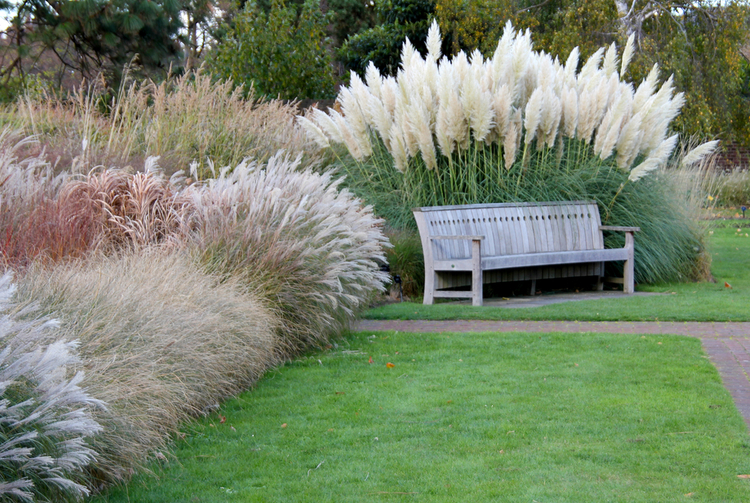
The Sunday Mail


Pampas grass
GRASSES are among the most resilient groups of plants in the plant kingdom. They have been used by man since time immemorial and deserve a special place in our gardens.
For botanists, it’s quite a task to distinguish them since there are so many, but we will not let that discourage us from exploring this subject.
Why plant grasses?
They are very easy to establish and once they have taken will need minimum care, surviving without much watering. Use grasses in your garden where other plants have failed to succeed. Most will tolerate the complete drying out of soil without dying, quickly reviving when water is available.
They are excellent for low maintenance gardens.
Most grasses are resistant to various pests and diseases. Their different forms, colour and texture make them good subjects in the garden to be used for different effects.
The different colours of grasses make them good for different themes. Blues, browns, purples, whites, yellow, maroon, reds and greens are some of the colours to choose from.
Grasses are good for edging your border, screening off areas, as waterside plants, as groundcovers or simply as standalone specimens on a lawn or in pots.
They are really useful on steep ground to prevent water run-off, preventing soil erosion.
When it comes to land preparation it is important though to remember that most grasses are deep rooted and will respond to a well dug soil to the correct depth. There is however a deep misconception that burning grass helps it to grow. Burning is both dangerous and destructive. Avoid fires for whatever reason.
However addition of organic matter to any soil has many benefits. In clay soils it improves drainage whilst for sandy soils organic matter improves the water holding capacity.
There might be no need to fertilise unless if the grass is showing signs of starving.
Choose your grasses wisely. One of the most common ornamental grasses is cortaderia selloana, pampas grass, which can reach heights of up to three metres with white plumes.
It is a hardy specimen needing little attention. Can also be used as a waterside plant or as a screen and is best propagated by dividing stumps. Another good grass is miscanthus sinensis also growing to the same height as pampas grass. Equally hardy with blue green striped white leave, zebra like.
On a lesser large scale is the genus pennisetum, fountain grass growing up to 60cm. Pennisetum produces very beautiful arching flower spikes.
P. Ruselli’s leaves are purplish whilst P. Setaceum’s are green.
Phalaris arundinacea aka ribbon grass, is an attractive grass but very invasive, to be planted with caution. The bamboo family is also in the grass family.
You can choose the dwarf bamboo, pogonatherum paniceum considering that the normal bamboo can reach 10m in height.
The dwarf bamboo only grows up to 50cm succeeding well in both sun and shade. Most grasses will do well in full sun but a few species actually grow well in shad Of notable mention is mondo grass, ophiopogon japonicus the grass for shady areas, which will succeed where your lawn has failed.
Other grasses worth exploring are festuca glauca, molinia caerulea, cymbopogon citrzatus, bambusa gracilis, acorus, babiana, carex bronzita, chondropetalum tectorum, yushania aztecorum and juncus effusus.
Practise water conservation by planting ornamental grasses in your garden. Happy gardening!
Andrew Mangwarara is a horticulturist and can be reached at [email protected]



